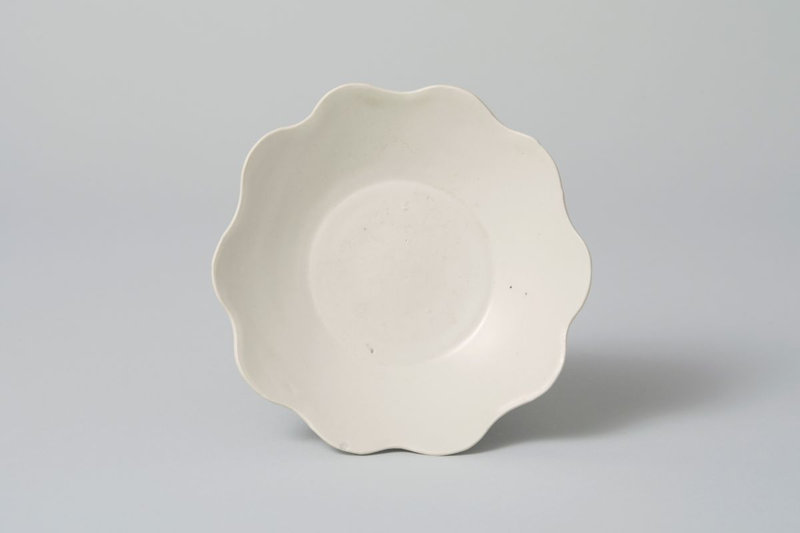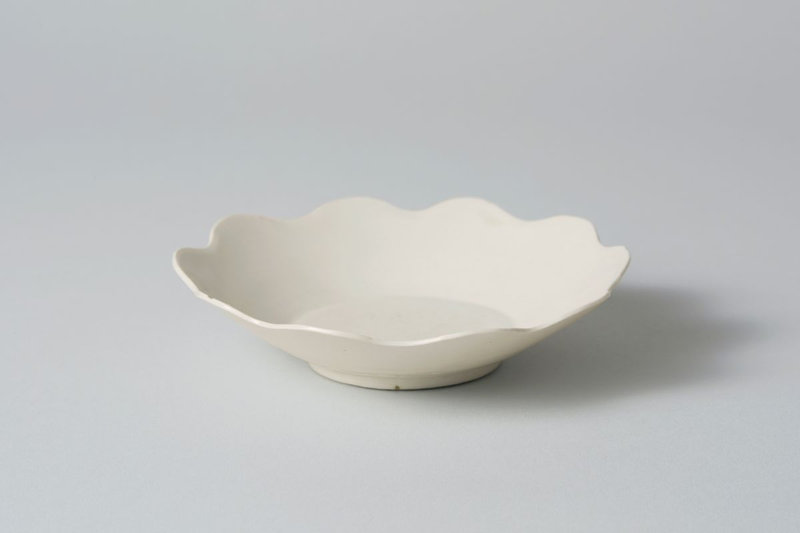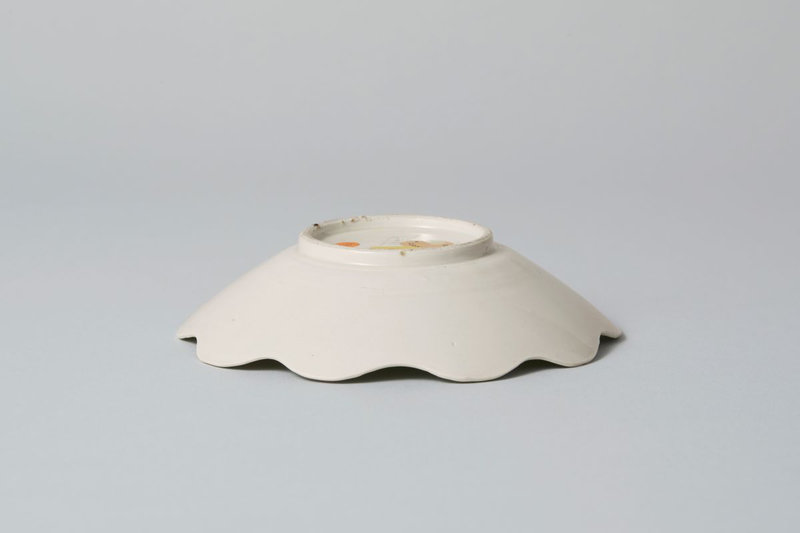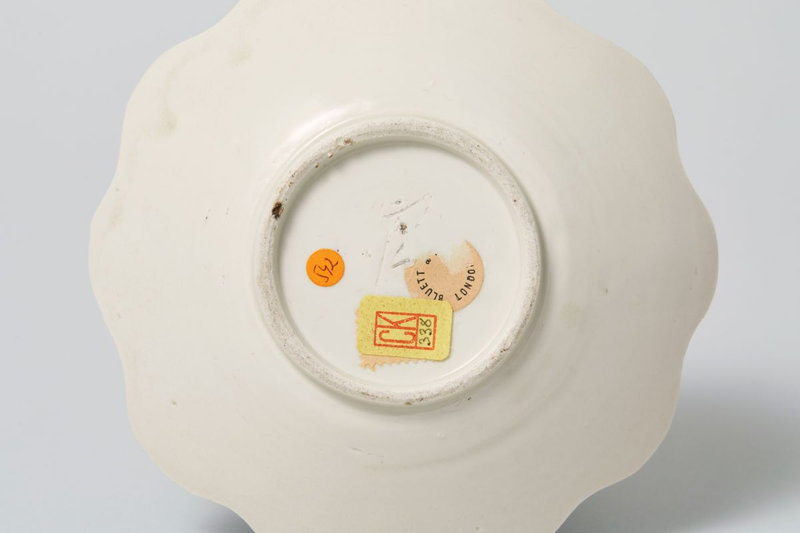White porcelain foliate-rim dish 'Guan' inscription, Ding ware, Five Dynasties, 10th century
White porcelain foliate-rim dish 'Guan' inscription, Ding ware, Five Dynasties, 10th century. Height 3.3 cm Diameter 13.4 cm. © Copyright 2023 MAYUYAMA & CO., LTD
Provenance: Bluett & Sons, London.
Former collection of Carl Kempe (1884-1967).
Literature: Gustaf Lindberg, “Hsing-Yao and Ting-Yao”, The Bulletin of the Museum of Far Eastern Antiquities , no. 25, The Museum of Far Eastern Antiquities, 1953, pl. 49, fig. 44.
Bo Gyllensvärd, Chinese Ceramics in the Carl Kempe Collection , Almquist & Wiksell, 1964, pl. 338.
Thomas Dexel, Frühe Keramik in China [Early Ceramic in China], Klinkhardt & Biermann, 1973, pl. 58c.
Margaret Medley, T'ang Pottery and Porcelain , Faber and Faber, 1981, p.
Note: It is a board of a ring flower with a sophisticated shape. The porcelain is made very thin, but the clay is well refined and baked, so it does not give the impression of being weak. The glaze is also of very high quality. The Ding kiln, which is famous as a famous kiln of the Song dynasty, was already at the stage of completion in the Five Dynasties and Ten Kingdoms period with its excellent shape and whiteness.
Looking at the bottom, the inscription "Kan" is engraved, suggesting the possibility that it was a special masterpiece among the Ting kiln works that was presented to the imperial court. Such notable examples are extremely rare, and only a limited number of upper-class tombs from the 10th century, artifacts excavated from the cellars, and artifacts handed down from the palace remain, and are rarely seen on the market. In terms of form, the thin and severe vessel shape gives a sense of the flow to the Northern Song Dynasty, but compared to Song Dynasty boards, the high ground is wide and stable, and it is a powerful classical style that is influenced by the Tang Dynasty. elements can be seen. The Ding kiln is famous for its fang-white glaze, which became popular in the latter half of the Northern Song Dynasty. And it seems. This work can be said to be a piece that symbolizes the five dynasties, connecting the Tang and Song dynasties.
The former owner, Carl Kempe (1884-1967), was one of Sweden's leading collectors of Chinese ceramics, and is known for his outstanding collection of white porcelain and celadon porcelain. His collection tends to have many examples that combine a high level of aesthetics with academic elements. This Rinkaban is known as an important item in the history of Chinese ceramics, as it is often mentioned in books as a valuable example of the work of the Ding kiln of the Five Dynasties.

/https%3A%2F%2Fprofilepics.canalblog.com%2Fprofilepics%2F1%2F0%2F100183.jpg)
/https%3A%2F%2Fstorage.canalblog.com%2F03%2F02%2F119589%2F96711876_o.jpg)
/https%3A%2F%2Fstorage.canalblog.com%2F11%2F31%2F119589%2F94773502_o.jpg)
/https%3A%2F%2Fstorage.canalblog.com%2F20%2F83%2F119589%2F94772815_o.jpg)
/https%3A%2F%2Fstorage.canalblog.com%2F26%2F72%2F119589%2F75604929_o.jpg)
/https%3A%2F%2Fstorage.canalblog.com%2F59%2F60%2F119589%2F26458628_o.jpg)






/http%3A%2F%2Fstorage.canalblog.com%2F43%2F56%2F119589%2F127909683_o.jpg)
/http%3A%2F%2Fstorage.canalblog.com%2F90%2F51%2F119589%2F127906087_o.jpg)
/http%3A%2F%2Fstorage.canalblog.com%2F76%2F22%2F119589%2F126235174_o.jpg)
/http%3A%2F%2Fstorage.canalblog.com%2F84%2F71%2F119589%2F122175714_o.jpg)